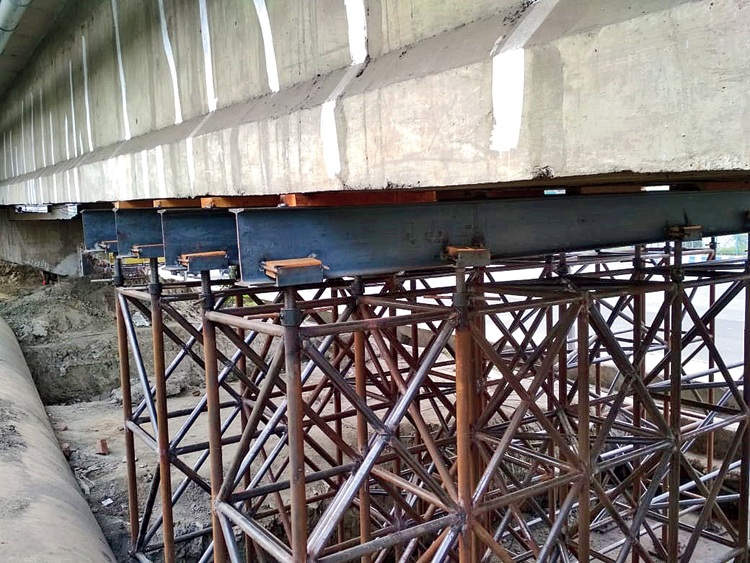The EM Bypass-bound flank of the flyover connecting VIP Road with the Bypass will be shut for a day to allow an adhesive to be injected into cracks that have resurfaced despite repairs.
The flyover is only about nine years old but portions of it have collapsed on two occasions. Patchwork repairs have been carried out several times, requiring the flyover to be shut down for at least a day.
If the latest attempt to seal the cracks with adhesive failed, the cracks would have to be covered with a “carbon fibre wrap” — a complicated process that would help reinforce the structure.
The decision to carry out the repairs was taken after Delhi-based engineering consultant ITL-Cortex submitted a report saying the cracks in the flyover’s underbelly had not healed and repair was necessary for structural stability.
The urban development department had engaged the firm last year for a health scan of the city’s bridges and flyovers in the aftermath of the Majerhat bridge collapse.
The 1.29km-long Bypass-VIP Road flyover, inaugurated in January 2011, was one of the structures surveyed. A load test with 80 tonnes of cumulative weight was carried out on the flyover and the cracks in its underbelly showed signs of stress despite a repair job carried out in July last year.
“We want to try a new model of repair by injecting epoxy resin into the cracks. There are agencies in Switzerland, France and Germany that specialise in this grouting job,” said a member of the expert committee, set up by the government to oversee the health of Calcutta’s bridges and flyovers.
“Once grouting is over, we will close the flank for a day and carry out a load test, this time with over 100 tonnes of static weight and see how the cracks respond,” he said.
Several structural engineers told Metro that epoxy resin has high adhesive strength, displays natural gap-filling properties and doesn’t melt, making it a popular choice among engineers. The resin is injected into the gaps created by the cracks and left to heal.
The urban development department has found three companies from Switzerland, Germany and France that have a commendable track record in repairs involving epoxy resin. One of them could be invited to take up the task.
If this method works with one flank of the Ultadanga flyover, it will be tried out in other structures, including the Baghajatin rail overbridge.
The VIP Road-Bypass flyover had been closed to traffic for three days in July last year after engineers scanning the structure suddenly noticed a few cracks on both sides of the retaining wall of its VIP Road-bound flank.
One of the flanks was thrown open after three days, and the other — that brings vehicles from the VIP Road side — remained shut till October to make way for repairs. It was opened just ahead of Puja last year.
The flyover had to be shut once again for a day in December to carry out load-bearing test. The outcome of the test prompted the government to carry out fresh repairs.











